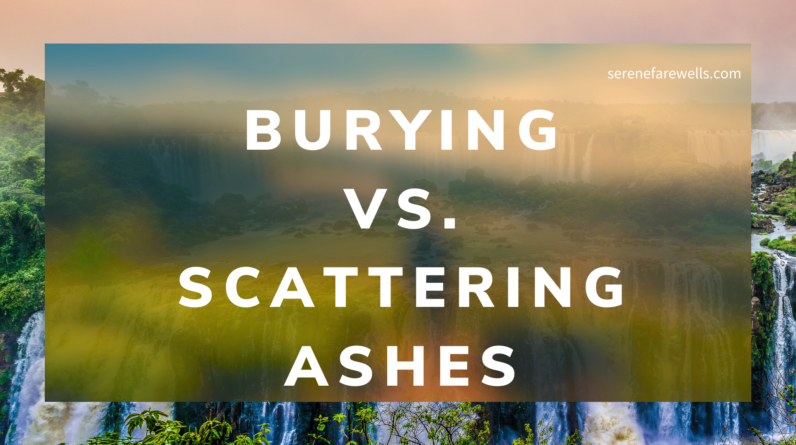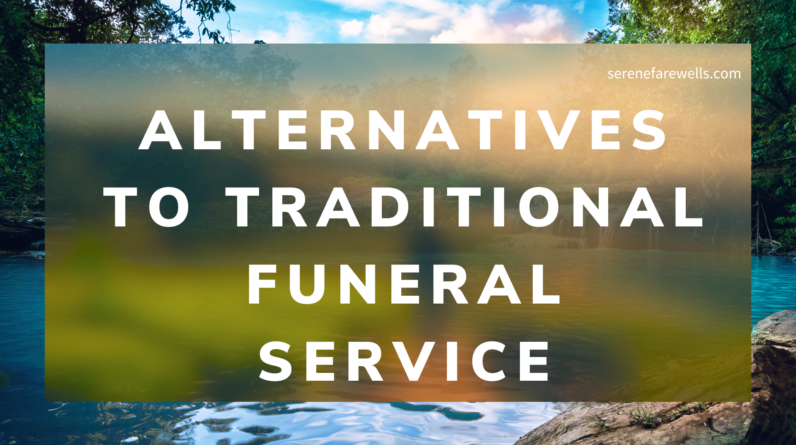
So you’ve recently lost a loved one and now you find yourself faced with the decision of what to do with their remains. It’s a tough choice, but one that must be made. Should you opt for the traditional route of burying their ashes or go with the more modern approach of scattering them? While both options hold their own sentimental value, it’s important to consider the costs involved. In this article, we’ll explore the financial aspects of burying versus scattering ashes, giving you a clearer picture to help make an informed decision during this challenging time.
1. Burying Ashes
Burying ashes is a traditional method of laying a loved one to rest. While it is an emotional and meaningful process, it is important to consider the various costs involved. Here, we will break down the key expenses that come with burying ashes and help you understand the total costs you may incur.
1.1 Cemetery Costs
One of the primary expenses associated with burying ashes is the cost of purchasing a cemetery plot. The price of a grave plot can vary significantly depending on factors such as the location, size, and desirability of the cemetery. It is essential to research different cemeteries and their pricing options to find one that fits your budget.
1.2 Grave Plot Costs
In addition to the cemetery costs, you will also need to budget for the actual grave plot. These costs can range from a few hundred dollars to several thousand dollars, depending on the cemetery and its location. It is common for highly sought-after cemeteries to have higher plot costs.
1.3 Casket or Urn Costs
When burying ashes, you may choose to use either a casket or an urn. The cost of a casket can vary greatly, depending on the material, design, and craftsmanship. On the other hand, urns offer a more affordable option and also come in a wide range of styles and price points. It is important to consider your preferences and budget when making this decision.
1.4 Headstone or Marker Costs
To commemorate the burial site, many people choose to install a headstone or marker. The cost of a headstone can vary based on factors such as the material, size, and complexity of the design. Additionally, some cemeteries may have specific regulations regarding the type and size of headstones allowed, which can impact the overall cost.
1.5 Burial Permit and Fees
Before burying ashes, you will need to obtain a burial permit from the relevant authorities. This permit ensures that the process is conducted legally and in compliance with local regulations. Depending on your location, there may be associated fees for the permit, which should be factored into your overall cost calculation.
1.6 Funeral Service Costs
While burying ashes, many families choose to have a funeral service to honor their loved one’s memory. Funeral service costs can vary widely based on factors such as the location, type of service, and desired level of customization. It is important to consider the costs of funeral home services, chapel rental fees, floral arrangements, and any other elements you wish to include in the service.
1.7 Grave Maintenance Costs
Another factor to consider is the long-term maintenance and care of the burial site. Some cemeteries charge maintenance fees to ensure the upkeep and cleanliness of the grounds. These fees can be annual or one-time payments, depending on the cemetery’s policies. It is essential to inquire about these costs and include them in your overall budget.
1.8 Exhumation or Relocation Costs
In certain situations, families may need to consider the potential costs of exhumation or relocation. Whether it is due to personal reasons or a change in circumstances, moving a burial site can involve significant expenses. These costs can include permits, legal fees, transportation costs, and the purchase of a new grave plot or scatter location.
1.9 Additional Costs
In addition to the core expenses mentioned above, there may be other miscellaneous costs associated with burying ashes. These can include items such as burial shrouds, flowers, grave liners, and grave opening and closing fees. It is important to factor in these additional costs to ensure an accurate estimation of the total expenses.
1.10 Total Costs
When calculating the total costs of burying ashes, it is crucial to consider all the factors mentioned above. The cumulative costs can vary greatly depending on your preferences, location, and the specific choices you make throughout the process. To accurately estimate the total costs, it is advisable to consult with cemetery representatives, funeral directors, and other relevant professionals who can provide guidance based on your specific circumstances.
2. Scattering Ashes
Scattering ashes is an increasingly popular alternative to traditional burial. This method offers a more intimate and personalized way to say goodbye to a loved one. However, it is important to understand the costs involved in this process as well. Let’s explore the various expenses associated with scattering ashes.
2.1 Scattering Ceremony Costs
When opting for scattering ashes, many families choose to have a scattering ceremony. This can be a beautiful and meaningful event where friends and family gather to honor the loved one’s memory. However, it is essential to consider the associated costs, such as venue rental, seating arrangements, decorations, and any other elements you wish to incorporate into the ceremony.
2.2 Memorial or Celebration of Life Costs
In addition to the scattering ceremony, you may decide to host a memorial service or celebration of life event. This can be held at a separate location from the scattering site and allows for further remembrance and sharing of stories. The costs associated with these events can include venue rental, catering, audiovisual equipment, and any other personalized elements you wish to include.
2.3 Scattering Locations
Scattering ashes offers a vast array of location options. Whether it’s a favorite beach, a peaceful forest, or even at sea, choosing the right location can contribute to the overall cost. Some locations require permits or have specific regulations, which may involve additional fees. It is crucial to research your desired scattering locations and consider any potential costs or restrictions.
2.4 Scatter Tube Costs
To facilitate the scattering process, you might choose to use a scatter tube. These tubes provide a convenient and respectful way to scatter ashes. The cost of a scatter tube varies depending on the material, design, and capacity. If you opt for scatter tubes, it is advisable to consider this expense when planning for the overall costs.
2.5 Transportation Costs
Scattering ashes in a location away from home may require transportation arrangements. These costs can include airfare or gas expenses, accommodation, and vehicle rentals if necessary. It is important to consider these costs if you plan to scatter ashes in a different city or country.
2.6 Professional Services Fees
While scattering ashes can be a personal and intimate process, some families choose to engage professional services to assist in organizing and conducting the ceremony. These services can include event planners, celebrants, musicians, or photographers. The fees associated with these professionals should be factored into your budget if you decide to utilize their services.
2.7 Permit Costs
Depending on the regulations of the scattering location, you may need to obtain permits. These permits ensure that the scattering process is done legally and in compliance with local laws. Permit costs can vary depending on the location and any associated administrative fees.
2.8 Biodegradable Urn Costs
For those who wish to scatter ashes in a more environmentally friendly manner, biodegradable urns are a popular choice. These urns are designed to break down naturally over time, allowing the ashes to be released into the environment. The cost of biodegradable urns can vary depending on the material and design, and it is essential to consider this expense if you opt for this eco-friendly option.
2.9 Cleaning or Restoration Costs
After the scattering ceremony, you may want to consider cleaning or restoring the scattering location, especially if it is a public or rented space. Depending on the condition of the area and any specific requirements, there may be costs associated with cleaning or restoring the site to its original state.
2.10 Total Costs
When calculating the total costs of scattering ashes, it is essential to consider the various factors mentioned above. The cumulative costs can differ significantly depending on your preferences, location, and specific choices throughout the process. It is advisable to research and gather information about the specific costs associated with your intended scattering plan to ensure an accurate estimation of the total expenses.
3. Factors Affecting Costs
When considering whether to bury or scatter ashes, it is important to understand the factors that can affect the overall costs. By exploring these factors, you can make an informed decision based on your financial situation and personal preferences.
3.1 Geographic Location
Geographic location plays a significant role in determining the costs associated with burying or scattering ashes. Different areas may have varying costs of living, which can impact prices for cemetery plots, funeral services, and scattering site rentals. It is crucial to research the specific costs in your area to effectively plan your budget.
3.2 Cemetery or Scattering Location
The specific cemetery or scattering location you choose will have a direct impact on the associated costs. High-profile cemeteries or sought-after scattering sites may command higher prices for plots or rental fees. It is essential to consider both the sentimental value and the financial implications of the location you select.
3.3 Type and Style of Ceremony
The type and style of the ceremony will also affect the costs. Elaborate funeral services or scattering ceremonies with personalized elements and additional services can come with higher price tags. Conversely, opting for simpler, more intimate ceremonies can help reduce costs. It is important to consider your preferences and budget when planning the type and style of the ceremony.
3.4 Additional Services
Additional services, such as the engagement of professional event planners, photographers, or musicians, can significantly impact the overall costs. While these services can enhance the experience and create lasting memories, they should be considered within your budget constraints. Balancing the desire for additional services with the associated costs is an essential aspect of decision-making.
3.5 Personalized Options
Personalization is often a crucial element when saying goodbye to a loved one. However, incorporating personalized options into burial or scattering ceremonies can add to the costs. Whether it involves customized memorial items, handcrafted urns, or special decorations, it is important to weigh the emotional value against the financial implications of these personalized elements.
3.6 Professional Fees
Professional fees can arise from engaging various service providers, such as funeral directors, celebrants, or event planners. These professionals play essential roles in ensuring the smooth execution of the burial or scattering process. However, their fees can impact the overall costs. It is advisable to obtain quotes from several professionals and compare their services and pricing before making a decision.
3.7 Administrative and Legal Fees
Administrative and legal fees can arise from obtaining burial permits, organizing the necessary paperwork, or handling any legal aspects involved in burying or scattering ashes. While these fees may vary depending on your location and the complexity of the process, it is essential to budget for them to ensure a smooth and legally compliant ceremony.
3.8 Pre-Planning and Prepayment
Pre-planning and prepaying for burial or scattering services can offer potential cost savings. Some funeral homes and cemeteries offer pre-planning options where you can secure services and pricing at current rates, avoiding potential future price increases. It is worth exploring these options if you have the opportunity, as they can provide financial peace of mind.
3.9 Cemetery or Memorial Park Policies
Different cemeteries or memorial parks may have specific policies that can impact costs. These policies may include requirements for certain types of grave markers, restrictions on certain burial or scattering practices, or additional fees for maintenance or visitation privileges. It is crucial to inquire about the policies of your chosen location to avoid any unexpected expenses.
3.10 Available Discounts or Financing Options
Before finalizing your decision, it is always worth exploring any available discounts or financing options. Some funeral homes, cemeteries, or scattering sites may offer discounts for certain groups or provide financing options to help manage the costs. By researching and inquiring about potential savings or payment plans, you may be able to mitigate some of the financial burden.
4. Comparing the Costs
To make an informed decision between burying and scattering ashes, it is important to compare the costs associated with each option. Understanding the potential expenses involved can help you evaluate the financial implications and align them with your personal preferences. Let’s explore the cost comparison between burying and scattering ashes.
4.1 Cost Comparison of Burying Ashes
Burying ashes typically involves purchasing a cemetery plot, a casket or urn, a headstone or marker, burial permits and fees, funeral service costs, grave maintenance costs, and potentially, exhumation or relocation costs. The total costs for burying ashes can vary widely, ranging from several thousand dollars to tens of thousands of dollars, depending on the choices made and the location selected.
4.2 Cost Comparison of Scattering Ashes
Scattering ashes generally includes costs associated with a scattering ceremony, memorial or celebration of life costs, scattering location fees or permits, scatter tube costs, transportation costs, professional services fees, cleaning or restoration costs, and potentially, the purchase of a biodegradable urn. The total costs for scattering ashes can range from a few hundred dollars to several thousand dollars, depending on the level of personalization and the chosen location.
4.3 Factors to Consider in Decision-Making
When comparing the costs between burying and scattering ashes, it is important to consider various factors. These can include your budget, the sentimental value of the chosen method, any legal or cultural restrictions, and the long-term maintenance and care required. Additionally, it is crucial to evaluate the emotional and personal factors associated with each option to ensure that your decision aligns with your values and beliefs.
5. Other Considerations
While costs play a significant role in the decision-making process, there are several other factors to consider when choosing between burying and scattering ashes. These additional considerations can help you make a well-rounded choice that reflects your loved one’s wishes and honors their memory effectively.
5.1 Emotional and Personal Factors
The emotional and personal factors associated with burying or scattering ashes are unique to each individual and family. Some may find solace and comfort in traditional burial practices, whereas others may prefer the freedom and intimacy of scattering ashes in a meaningful location. It is important to consider these emotional and personal factors when making your decision.
5.2 Cultural and Religious Beliefs
Cultural and religious beliefs can play a significant role in the decision-making process. Some religions have specific guidelines or requirements regarding burial or scattering practices. It is essential to consider and respect these beliefs when making your choice.
5.3 Environmental Considerations
As environmental consciousness grows, many individuals and families are considering the environmental impact of their final arrangements. Scattering ashes in a biodegradable urn or choosing eco-friendly burial practices may align with your values if you prioritize sustainability and minimizing the environmental impact.
5.4 Accessibility and Visitation
Another factor to consider is the accessibility and ease of visitation of the final resting place. Traditional cemeteries provide designated areas for visitation and offer a sense of permanence. Scattering locations, on the other hand, may have different levels of accessibility, and It is important to consider the ease of visitation if regular remembrance and visitation are important to you.
5.5 Long-Term Maintenance and Care
The long-term maintenance and care required for burial plots or scattering locations should also be taken into account. Traditional burials often involve grave maintenance and potential upkeep costs, whereas scattering sites may require occasional cleaning or restoration. It is important to consider your willingness and ability to maintain and care for the chosen option.
5.6 Memorials and Commemorative Options
Memorials and commemorative options are important aspects to think about when choosing between burying and scattering ashes. Traditional burials often come with the advantage of having a designated permanent memorial space, such as a headstone or marker, which can serve as a physical representation of the loved one’s memory. Scattering ashes allows for more flexibility in creating personalized memorials, such as memorial plaques or dedicated trees or benches.
5.7 Future Flexibility and Portability
Consider whether you value the flexibility and portability of the remains. Burying ashes allows for a permanent location, while scattering ashes provides an opportunity to select multiple meaningful locations or to transport the ashes to different places over time. It is essential to consider the potential need or desire for future moves or adjustments when making your decision.
6. Conclusion
When deciding between burying and scattering ashes, it is important to take into account the various costs, factors, and considerations outlined above. By thoroughly researching and understanding the expenses associated with each method, as well as considering emotional, cultural, and environmental factors, you can make a well-informed decision that reflects your values, honors your loved one’s memory, and fits within your budget. It is advisable to consult with professionals in the funeral and memorial industry to receive personalized guidance based on your unique circumstances. Ultimately, the choice between burying and scattering ashes is a deeply personal one, and it is important to honor your loved one’s wishes and find solace in the decision you make.






